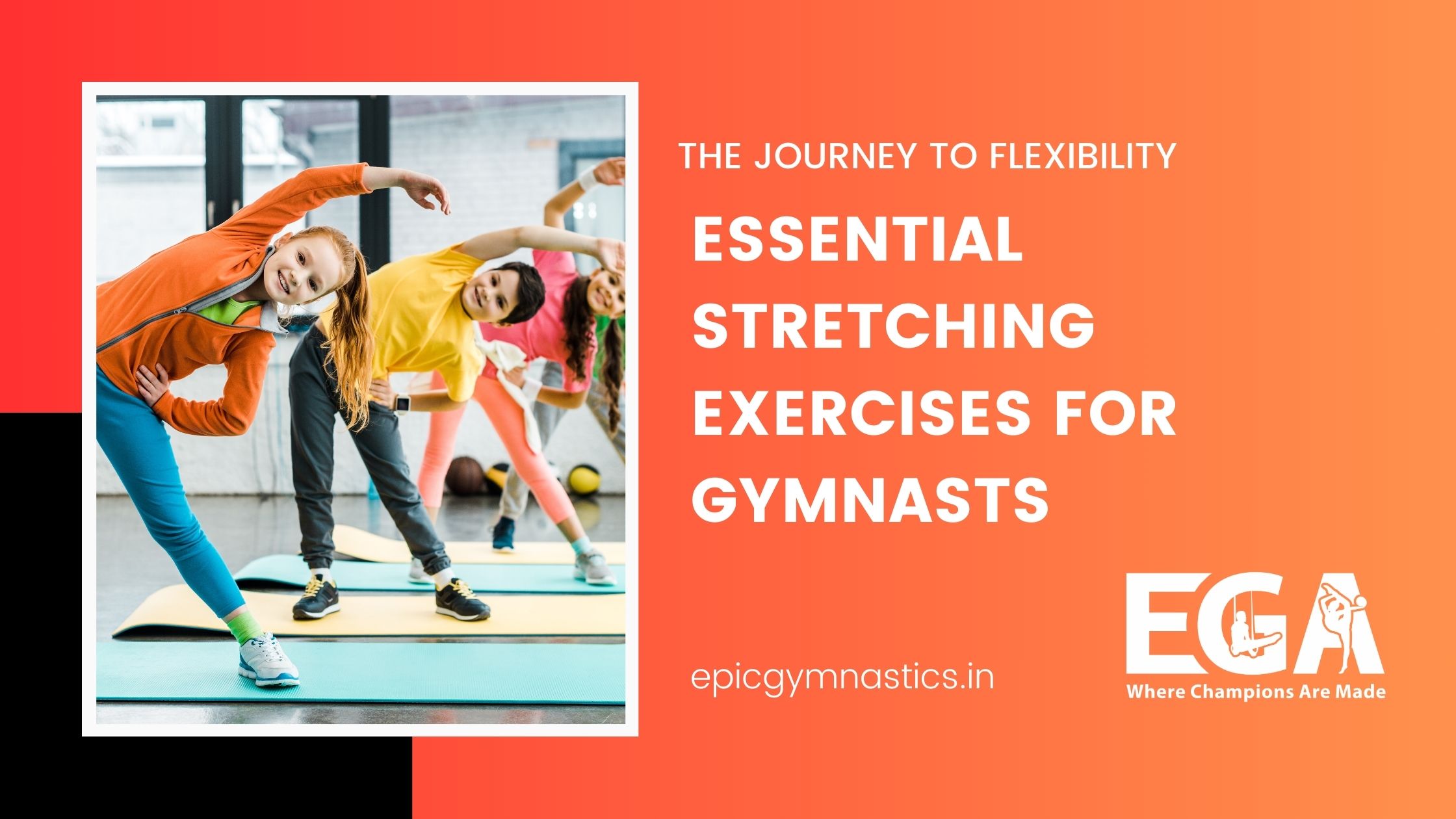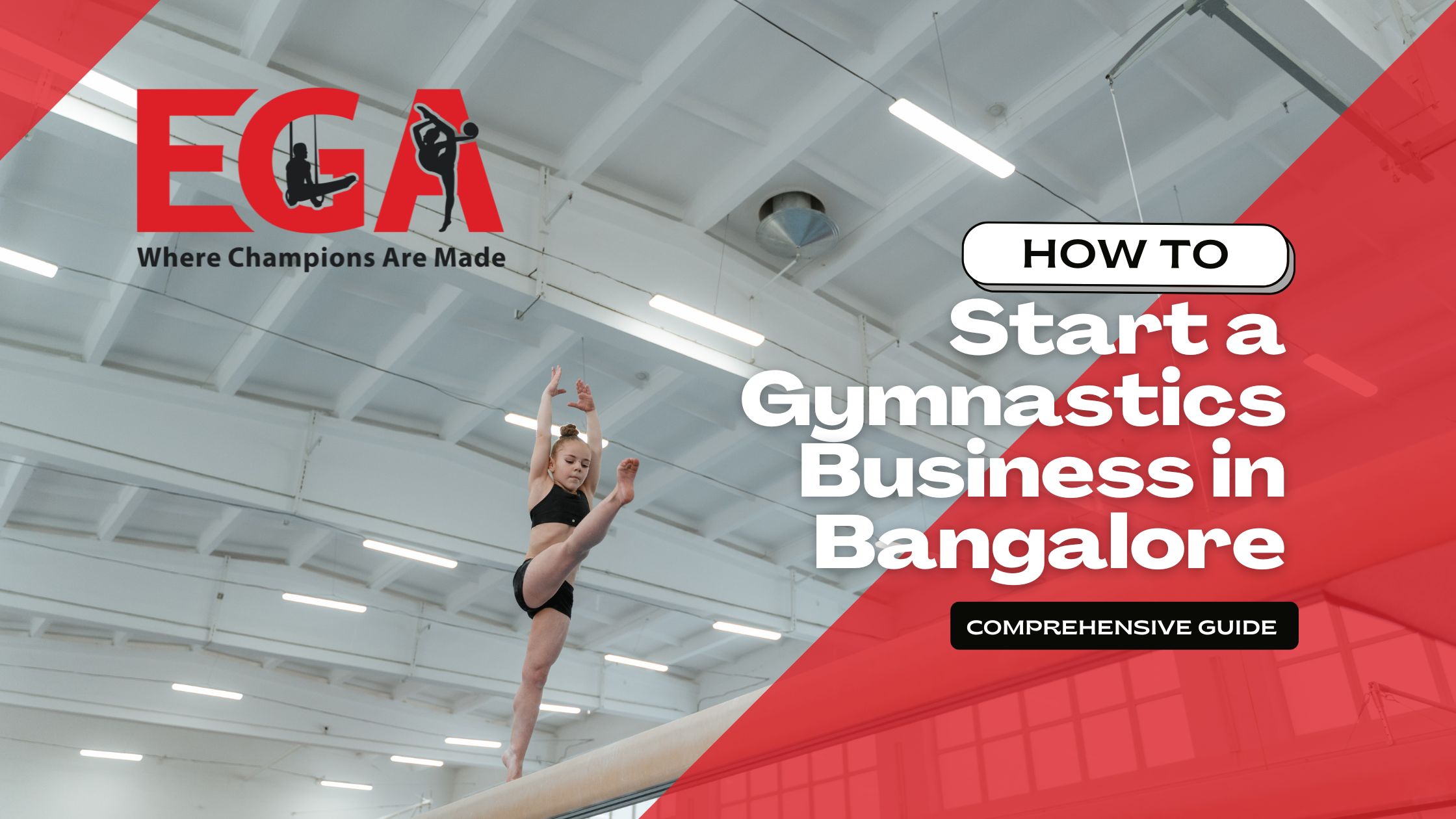
- +91 8553346300
- [email protected]
Menu

Flexibility is a fundamental aspect of gymnastics that separates an average gymnast from an outstanding one. It not only allows gymnasts to perform their routines with grace and precision but also plays a crucial role in reducing the risk of injury and enhancing overall performance. In gymnastics, flexibility is not merely an added advantage but a necessary component of the sport.
This article delves into the importance of flexibility in gymnastics, the benefits it brings, and a comprehensive guide to essential stretching exercises that every gymnast should incorporate into their training routine. Whether you’re a beginner or a seasoned gymnast, improving flexibility is a continuous journey that can significantly impact your success in the sport.
Flexibility is the range of motion around a joint. In gymnastics, it’s essential for executing various movements such as splits, jumps, flips, and turns with ease and fluidity. A gymnast with poor flexibility will struggle to perform these moves, leading to potential errors and injuries.
1. Enhancing Performance
A gymnast’s performance is heavily reliant on their ability to stretch and control their body in extreme positions. For example, achieving a full split requires extensive flexibility in the hip flexors, hamstrings, and quadriceps. Without adequate flexibility, the gymnast may not be able to achieve the full range of motion required, affecting the aesthetics and technical execution of the routine.
2. Reducing Injury Risk
Flexibility training plays a pivotal role in injury prevention. Gymnasts often perform high-impact and repetitive movements that place significant stress on their joints and muscles. A flexible body can absorb and distribute these forces more effectively, reducing the likelihood of strains, sprains, and other common gymnastics injuries.
3. Improving Recovery Time
Flexibility exercises also aid in faster recovery from workouts and competitions. Stretching increases blood flow to the muscles, delivering essential nutrients and oxygen that promote healing. This process helps reduce muscle soreness and stiffness, allowing gymnasts to maintain a consistent training schedule without prolonged downtime.
There are two main types of flexibility: static and dynamic. Both play crucial roles in gymnastics, and understanding their differences is key to effective training.
1. Static Flexibility
Static flexibility refers to the ability to hold a stretch in a stationary position. This type of flexibility is essential for movements like splits or holding a leg in the air. After a workout, when the muscles are warm, one typically performs static stretching to elongate them and enhance their range of motion.
2. Dynamic Flexibility
Dynamic flexibility involves moving a joint through its full range of motion with control and speed. This type of flexibility is crucial for gymnastics routines that require fluid movements, such as cartwheels, round-offs, and leaps. Perform dynamic stretching during the warm-up phase of a workout to prepare the muscles for the intensity of the training session.
Integrating a balanced routine of both static and dynamic stretches is vital for gymnasts aiming to improve their flexibility. The following are some essential stretching exercises that target key muscle groups used in gymnastics.
The hamstrings play a crucial role in gymnastics, especially in movements that involve leg lifts, splits, and jumps. Tight hamstrings can limit a gymnast’s ability to perform these movements, making hamstring stretches a fundamental part of flexibility training.
Seated Forward Bend: Sit with your legs extended straight in front of you. Slowly reach forward towards your toes, keeping your back straight. Hold the stretch for 30 seconds, feeling it along the back of your legs.
Standing Hamstring Stretch: Stand with one foot slightly in front of the other. Bend at the hips and lower your upper body towards the extended leg, keeping your back flat. Hold for 30 seconds and switch legs.
Hip flexors are essential for achieving splits and performing high kicks. Tight hip flexors can cause lower back pain and restrict the range of motion in the hips.
Lunge Stretch: Step one foot forward into a lunge position. Lower your hips towards the floor, keeping your back leg extended and your front knee aligned over your ankle. Hold for 30 seconds and switch sides.
Butterfly Stretch: Sit with your feet together, knees bent out to the sides. With your elbows, gently press your knees against the ground, feeling the stretch in your inner thighs and hips. Hold for 30 seconds.
The quadriceps are heavily involved in jumps, landings, and kicks. Stretching the quadriceps helps improve flexibility and prevent muscle strains.
Standing Quad Stretch: Stand on one leg and pull the opposite foot towards your glutes, holding the ankle with your hand. Keep your knees together and your pelvis neutral. Hold the stretch for 30 seconds and switch legs.
Lying Quad Stretch: Lie on your side with one leg extended and the other bent behind you. Grab your ankle and gently pull your heel towards your glutes, keeping your pelvis aligned. Hold for 30 seconds and switch sides.
Gymnasts rely heavily on their shoulder and upper back flexibility for movements such as handstands, cartwheels, and backbends. Maintaining flexibility in these areas is essential for both performance and injury prevention.
Cat-Cow Stretch: Begin on all fours, with your hands directly under your shoulders. Arch your back and tuck your chin towards your chest (Cat Pose), then lift your chest and tailbone towards the ceiling (Cow Pose). Repeat the sequence 10 times, flowing smoothly between each position.
Shoulder Stretch: Stand or sit with your back straight. Extend one arm across your chest, then use your opposite hand to press the arm towards your body, stretching the shoulder. Hold for 30 seconds and switch arms.
In gymnastics, flexibility in the back and spine is critical for executing bridges, back walkovers, and other spine-extending movements.
Child’s Pose: Begin on all fours, then sit back on your heels while reaching your arms forward on the ground. Rest your forehead on the floor and feel the stretch along your spine. Hold for 30 seconds.
Bridge Pose: Lie on your back with your knees bent and feet flat on the ground. Place your hands by your ears, with your fingers pointing towards your shoulders. Press through your hands and feet to lift your hips towards the ceiling, forming a bridge. Hold this position for 10 to 15 seconds before lowering yourself slowly.
The splits are a fundamental skill in gymnastics, requiring a high degree of flexibility in the hamstrings, quadriceps, and hip flexors.
Front Splits: Extend one leg in front of you and the other behind, lowering your hips towards the ground. Keep your back straight and your front leg extended. Hold the stretch for 30 seconds, then switch sides.
Middle Splits: Start in a seated position with your legs extended out to the sides as far as possible. To deepen the stretch, lean slightly forward while keeping your back straight. Hold for 30 seconds.
Calf flexibility is essential for proper foot positioning during jumps, landings, and floor routines.
Downward-Facing Dog: Begin on all fours, then lift your hips towards the ceiling, forming an inverted V-shape with your body. To stretch your calves, press your heels against the ground. Hold for 30 seconds.
Standing Calf Stretch: Stand facing a wall, placing your hands on it at shoulder height. Step one foot back, pressing the heel into the ground while keeping the leg straight. Hold for 30 seconds and switch legs.
1. Warm-Up
Before beginning any stretching exercises, it’s crucial to warm up the body to increase blood flow to the muscles and prepare them for stretching. A 5-10 minute warm-up involving light cardio, such as jogging, jumping jacks, or skipping, will help raise your body temperature and loosen your muscles.
2. Dynamic Stretching (Pre-Workout)
Incorporate dynamic stretching exercises at the start of your training session. These stretches should mimic the movements you’ll be performing in your gymnastics routine. Dynamic stretches help improve mobility and prepare the muscles for explosive movements.
3. Static Stretching (Post-Workout)
End your workout with static stretching exercises. These stretches help elongate the muscles and improve flexibility. Hold each stretch for at least 30 seconds, allowing your muscles to relax and stretch to their full potential.
4. Consistency is key.
Consistent practice leads to flexibility improvements. Aim to stretch at least 3-4 times a week, gradually increasing the intensity and duration of your stretches as your flexibility improves.
5. Listen to Your Body
It’s important to listen to your body while stretching. Stretch to the point of mild discomfort, but avoid pushing yourself into pain. Overstretching can lead to injuries, so always prioritise safety and progress gradually.
In competitive gymnastics, flexibility is often the deciding factor between success and failure. Judges look for fluidity, range of motion, and the seamless execution of movements in a gymnast’s routine. A gymnast with superior flexibility will naturally excel in these areas, earning higher scores and setting themselves apart from the competition.
Flexibility also contributes to a gymnast’s versatility. Wide range of motion allows gymnasts to perform more complex and varied routines, crucial for high-level competitions that reward originality and difficulty.
For gymnasts at all levels, it’s essential to incorporate flexibility training into everyday practice. This not only helps in achieving short-term goals, such as mastering a new move or routine, but also contributes to long-term athletic development.
Set aside time in each practice session dedicated specifically to flexibility. You can perform dynamic stretches at the start of practice and static stretches at the end. Ensuring that stretching is a consistent part of training routines will help gymnasts gradually improve their flexibility over time.
Instead of treating flexibility as a separate component, we should integrate it with skill development. For example, when practicing splits, incorporate split stretches into the skill training itself, which helps reinforce the movement pattern in the brain.
Flexibility gains are not linear and may necessitate adjustments to routines as individuals progress. Coaches should monitor each gymnast’s flexibility and make necessary adjustments to ensure they are making consistent progress while avoiding overtraining.
Flexibility training offers benefits that extend beyond the gymnastics mat. It can enhance overall physical health, prevent injuries in daily life, and improve posture. For young gymnasts, the habits and skills learnt through flexibility training can foster a lifelong appreciation for physical fitness and well-being.
1. Injury Prevention in Daily Activities: Flexibility reduces the risk of injury not only in gymnastics but also in everyday activities. A flexible body is more resilient and can handle unexpected movements or strains without causing tears or sprains.
2. Improved posture and muscular balance: Regular stretching helps to correct muscular imbalances and improve posture, which is important for a gymnast’s overall physical health. Good posture reduces the risk of back and neck pain, which is common in people with sedentary lifestyles.
3. Long-term Athletic Development: For young athletes, the flexibility developed through gymnastics can also be beneficial in other sports. Whether transitioning to dance, athletics, or any other sport, the flexibility and body awareness gained from gymnastics provide a solid foundation.
The journey to flexibility is a critical aspect of gymnastics that requires dedication, consistency, and proper technique. By incorporating a variety of static and dynamic stretches into their routines, gymnasts can significantly improve their flexibility, reduce the risk of injury, and enhance their overall performance. At Epic Gymnastics Academy, we stress the importance of flexibility training as part of our comprehensive gymnastics program, helping our athletes reach their full potential both on and off the mat.
Through structured and consistent flexibility training, gymnasts can achieve greater range of motion, better posture, and increased strength, all of which are essential for success in gymnastics. Moreover, the benefits of flexibility extend beyond the sport, contributing to overall physical health and well-being. Whether you are just starting your gymnastics journey or looking to advance your skills, remember that flexibility is a key component of your success. So, stretch, reach, and strive for new heights in your gymnastics journey with Epic Gymnastics Academy.

Empowerment, Perseverance, Inspiration and Confidence - Epic Gymnastics Academy is here to support your journey and reach new heights in the world of Gymnastics.

Co Founder and COO of EGA - Epic Gymnastics Academy Bangalore




Epic Gymnastics Academy fosters a love for gymnastics with expert coaching and personalized training, helping athletes of all levels reach their full potential.
“Hard days are the best because that’s when champions are made.” – Gabby Douglas.
Disclaimer: The information provided on this website is for general informational purposes only. Epic Gymnastics Academy makes no representations or warranties of any kind, express or implied, about the completeness, accuracy, reliability, suitability, or availability with respect to the website or the information, products, services, or related graphics contained on the website for any purpose. Any reliance you place on such information is therefore strictly at your own risk. In no event will we be liable for any loss or damage including without limitation, indirect or consequential loss or damage, or any loss or damage whatsoever arising from loss of data or profits arising out of, or in connection with, the use of this website.